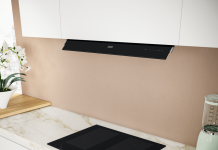 ABI Research forecasts the global wireless connectivity market, excluding cellular connectivity, to reach more than 10 billion annual IC shipments by 2021. As reported by the company, while smartphones will continue to represent the largest market, the introduction of Bluetooth mesh networking, emerging Wi-Fi protocols, enhancements to 802.15.4, such as ZigBee 3.0 and Thread, and the growing trend to develop multiprotocol connectivity system on chips (SoCs), will create new opportunities in various verticals of the IoT market. Bluetooth will be in 60% of total devices by 2021. The mobile phone market will account for less than 45% of total Bluetooth shipments by this time as Bluetooth Smart continues to grow and branch into new verticals. Bluetooth Smart will be in 16% of devices by this time, with strong growth in smart home and beacon applications, in addition to a significant presence in the connected home and wearable space. Wi-Fi will see its most significant growth in IoT verticals, such as wearables, automotive, the smart home, and other nascent IoT verticals. However, by 2021, mobile phones will still account for 55% of the Wi-Fi-enabled device market. Wi-Fi is also branching out into new frequency bands, including 802.11ad (WiGig) for high-speed wireless data transfer and sub-1GHz Wi-Fi HaLow (802.11ah). This will open up new opportunities for 802.11ad in the networking, mobile device, computing, and peripheral space, and in low power IoT devices and wireless sensor network applications for 802.11ah. By 2021, Wi-Fi will be found in 47% of all devices. 802.15.4-based technologies, such as ZigBee and Thread, are set to find success in the smart home, achieving a CAGR of 60% between 2016 and 2021. The technology will also see growth in energy management and smart city applications, such as building automation, smart metering, smart lighting, and industrial applications, accounting for more than 28% of devices by this time. However, 802.15.4 will still only be present in less than 9% of the device market by 2021, predominantly due to its absence in the smartphone and consumer electronic markets. NFC is also targeting new opportunities for mobile payments in smartphones and wearables, as well as secure pairing and provisioning of IoT devices. It is the growing prevalence of combo ICs, though, that will help drive the market forward, particularly in IoT verticals.
ABI Research forecasts the global wireless connectivity market, excluding cellular connectivity, to reach more than 10 billion annual IC shipments by 2021. As reported by the company, while smartphones will continue to represent the largest market, the introduction of Bluetooth mesh networking, emerging Wi-Fi protocols, enhancements to 802.15.4, such as ZigBee 3.0 and Thread, and the growing trend to develop multiprotocol connectivity system on chips (SoCs), will create new opportunities in various verticals of the IoT market. Bluetooth will be in 60% of total devices by 2021. The mobile phone market will account for less than 45% of total Bluetooth shipments by this time as Bluetooth Smart continues to grow and branch into new verticals. Bluetooth Smart will be in 16% of devices by this time, with strong growth in smart home and beacon applications, in addition to a significant presence in the connected home and wearable space. Wi-Fi will see its most significant growth in IoT verticals, such as wearables, automotive, the smart home, and other nascent IoT verticals. However, by 2021, mobile phones will still account for 55% of the Wi-Fi-enabled device market. Wi-Fi is also branching out into new frequency bands, including 802.11ad (WiGig) for high-speed wireless data transfer and sub-1GHz Wi-Fi HaLow (802.11ah). This will open up new opportunities for 802.11ad in the networking, mobile device, computing, and peripheral space, and in low power IoT devices and wireless sensor network applications for 802.11ah. By 2021, Wi-Fi will be found in 47% of all devices. 802.15.4-based technologies, such as ZigBee and Thread, are set to find success in the smart home, achieving a CAGR of 60% between 2016 and 2021. The technology will also see growth in energy management and smart city applications, such as building automation, smart metering, smart lighting, and industrial applications, accounting for more than 28% of devices by this time. However, 802.15.4 will still only be present in less than 9% of the device market by 2021, predominantly due to its absence in the smartphone and consumer electronic markets. NFC is also targeting new opportunities for mobile payments in smartphones and wearables, as well as secure pairing and provisioning of IoT devices. It is the growing prevalence of combo ICs, though, that will help drive the market forward, particularly in IoT verticals.




